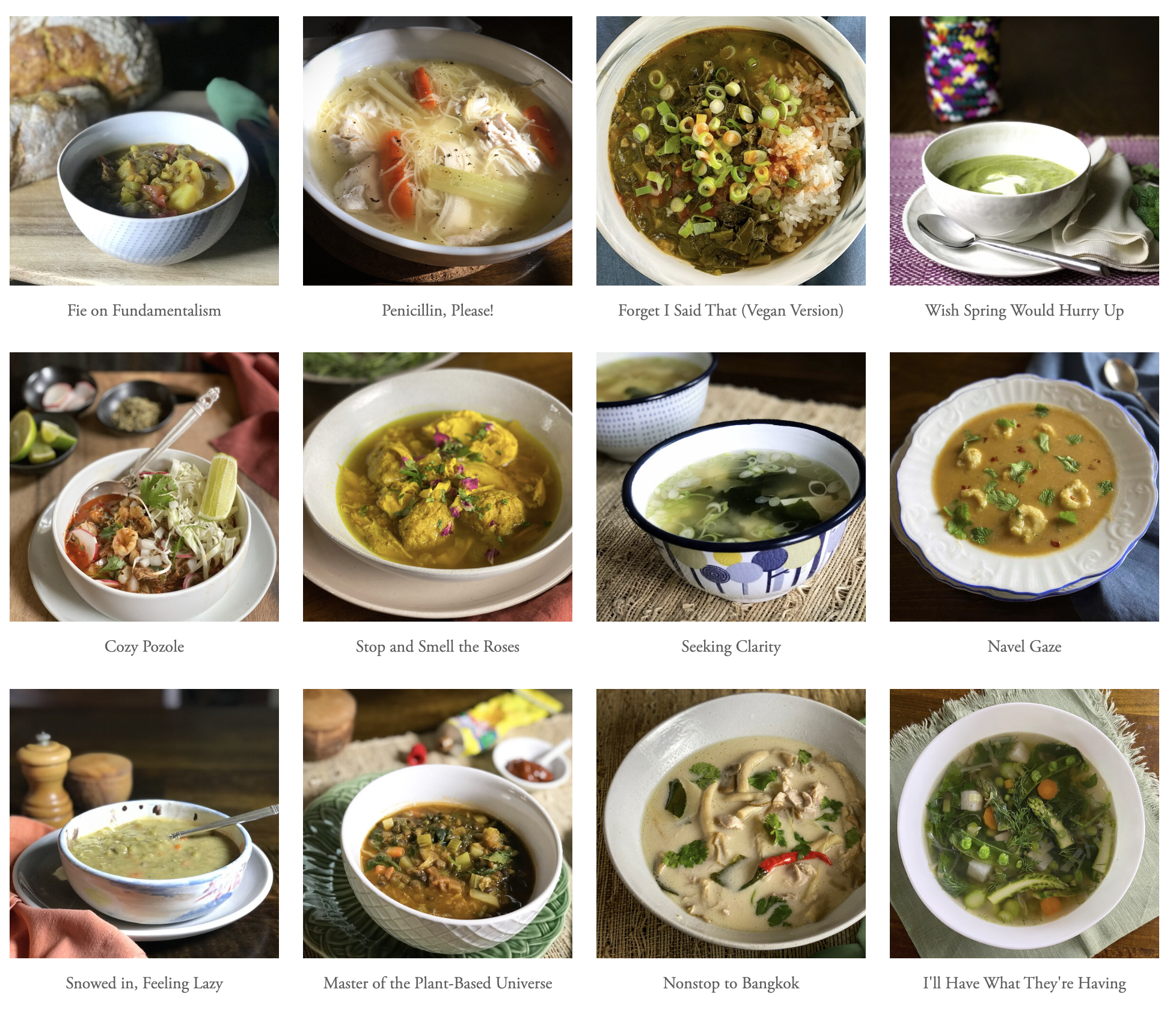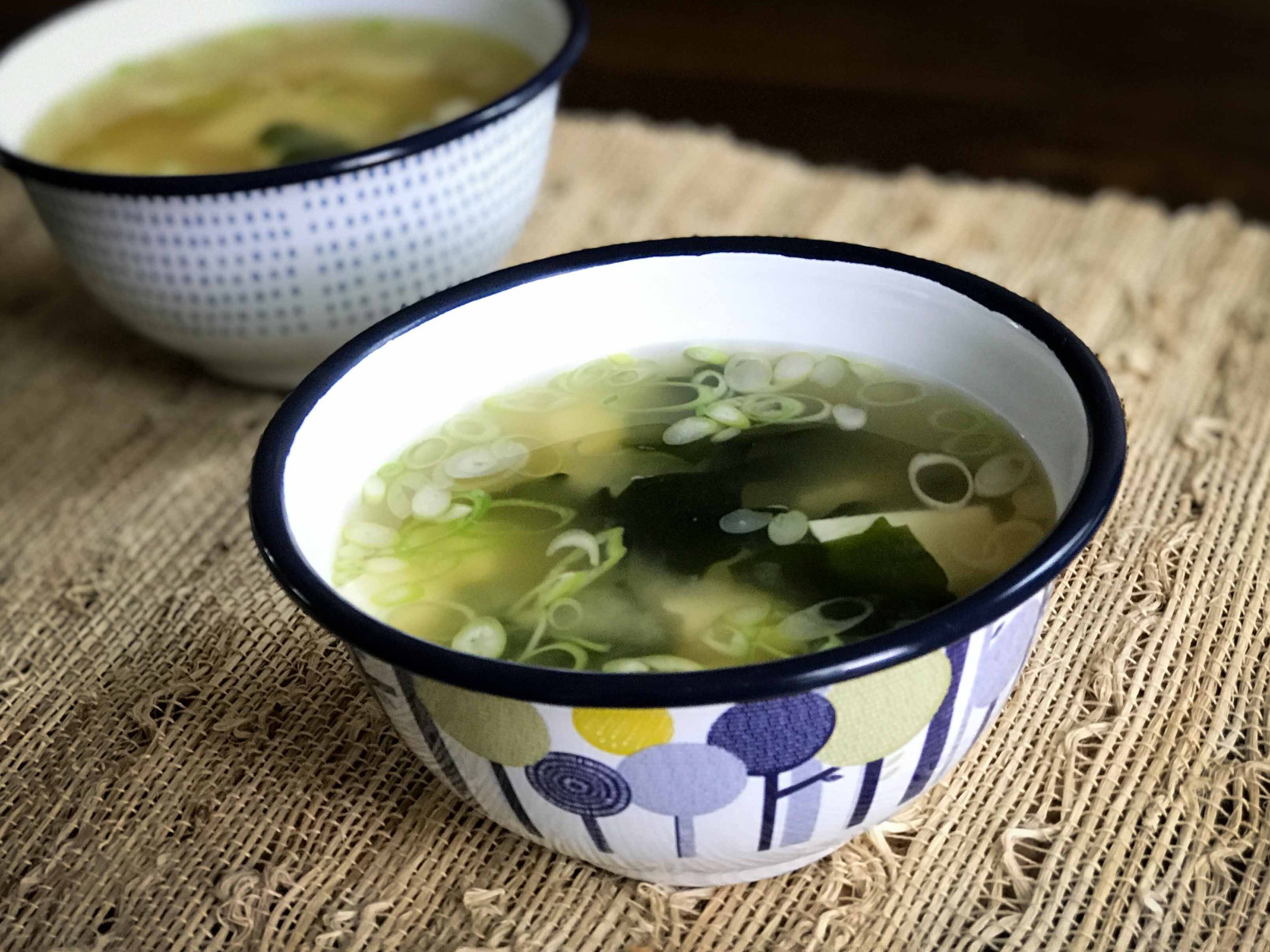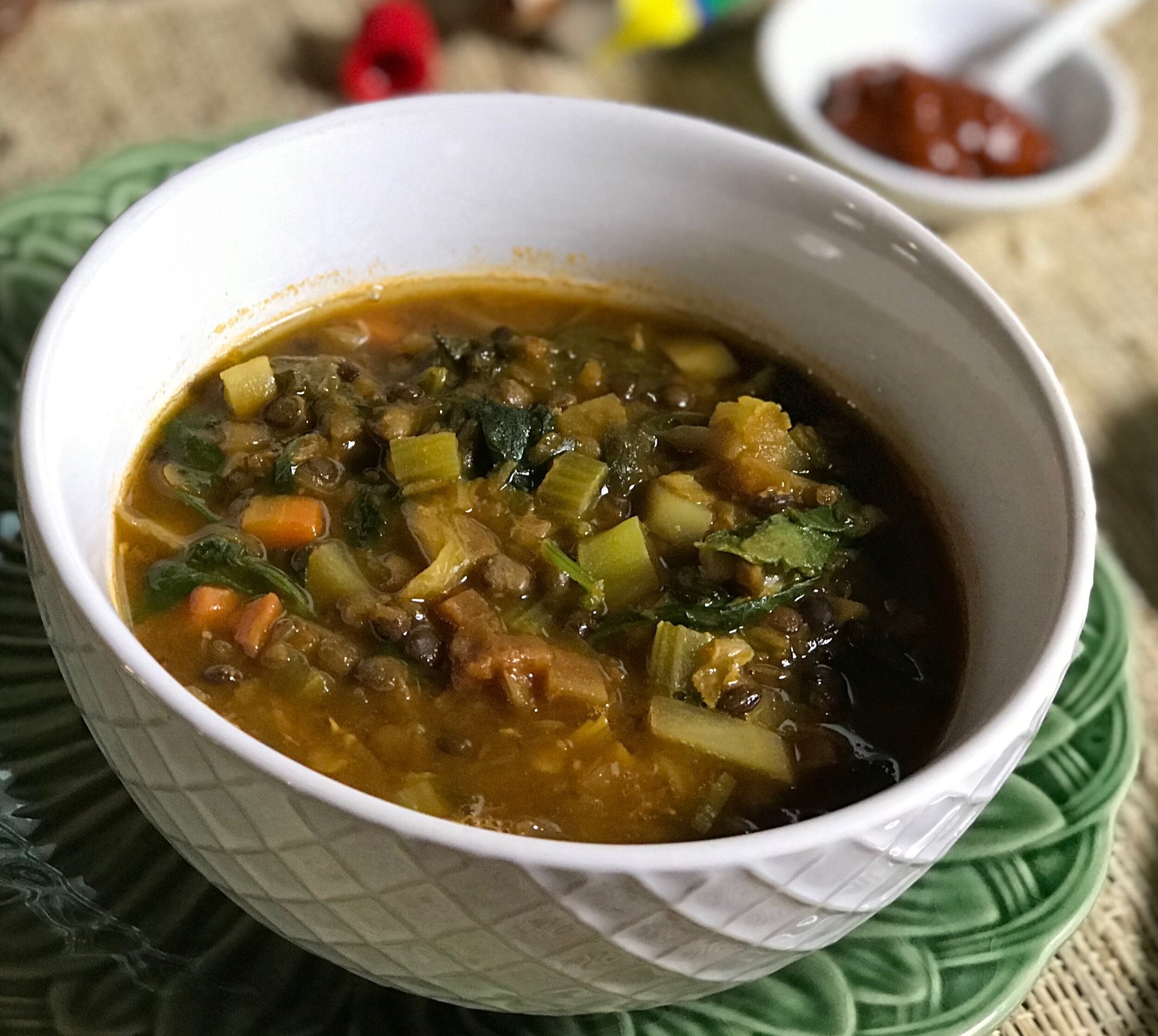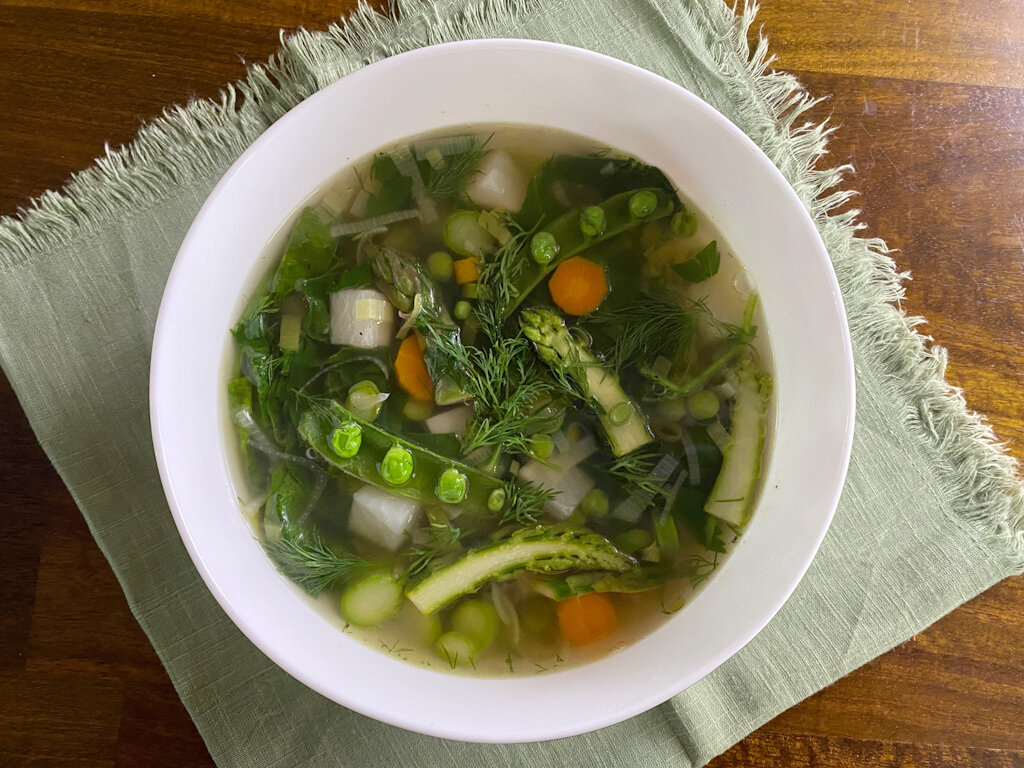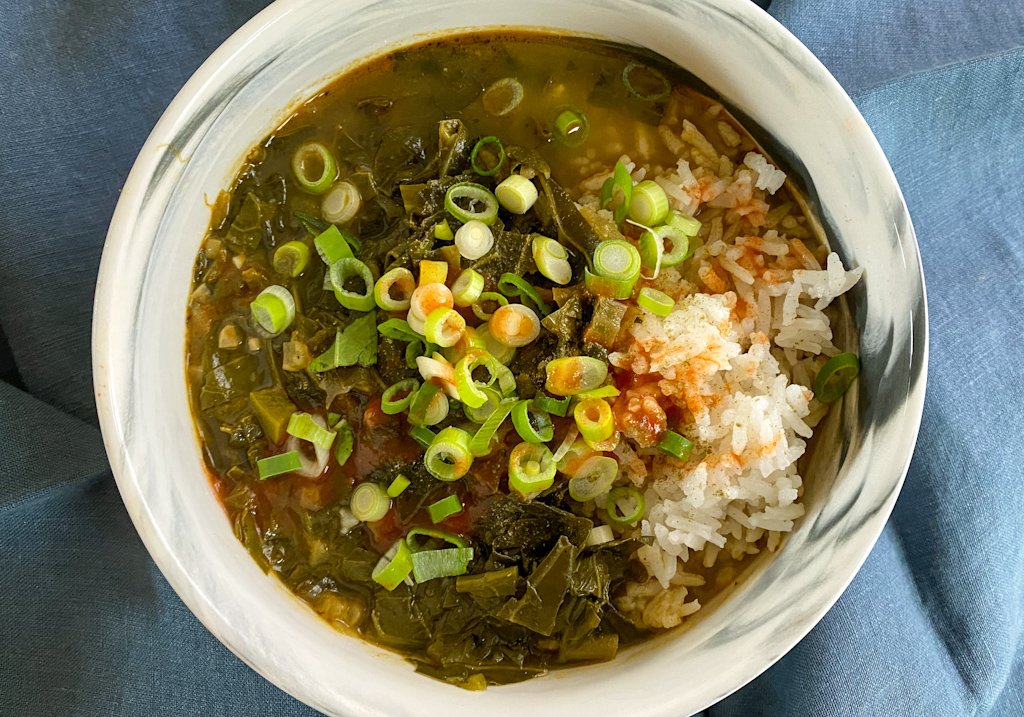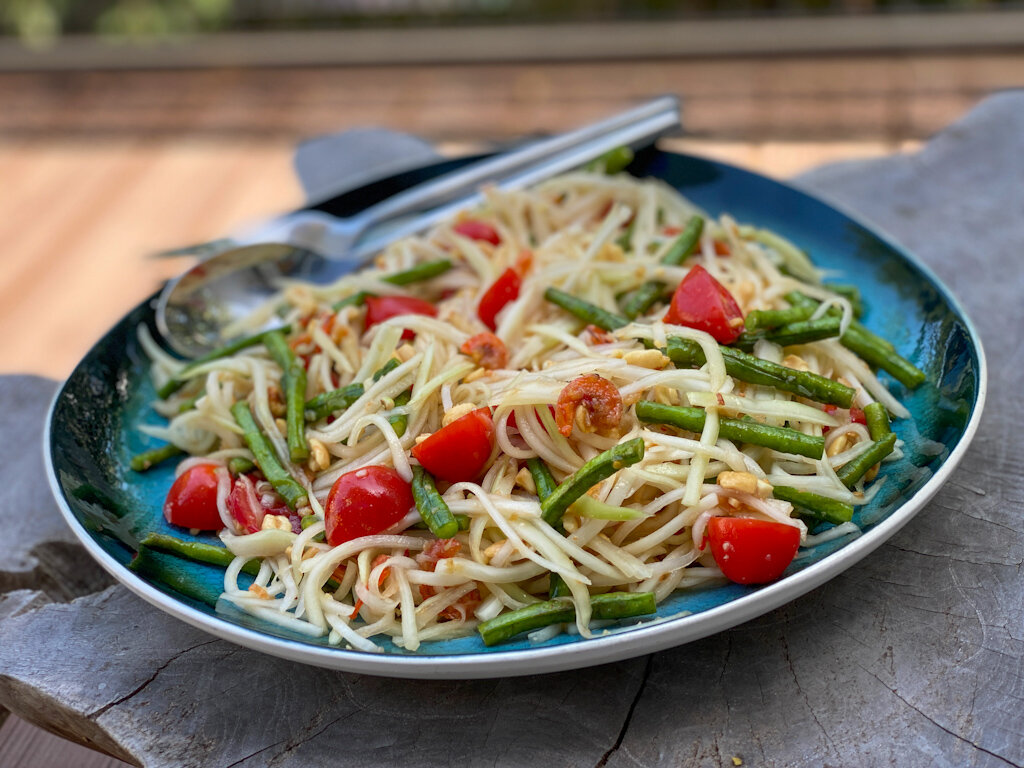By Leslie Brenner
You can say what you want about Gen Z, but here’s what I love: They know a good thing when they see it. And then they immortalize it with memes.
Take soup, for instance. My favorite four-letter meal has conquered the internet!
I couldn’t be happier about this development. In college, I majored in Soup. Soup is my middle name. Soup soup soup soup soup.
Here at Cooks Without Borders, we’ve got a soup for every winter mood. Gen Z, I’m talking to you.
Mood: Stop (all day) and smell the roses
Persian Chicken Soup with Chicken-and-Lamb Meatballs
When you’re in the mood for a major project — one that will fill your living space with the dreamiest fragrances you can imagine — this transporting soup adapted from Najmieh Batmanglij’s Food of Life delivers. Called abgusht-e morgh ba kufteh-ye nokhodchi in Farsi, it’s garnished with grated garlic, fresh herbs and dried rose petals.
Mood: Get me back to a clearer space
Miso Soup
In a perfect world, you can have miso soup anytime you want it. But hey — you can even have it in a highly imperfect world! Take ten minutes to make a batch of dashi, keep miso and tofu in the fridge (both keep for a long time) and the foundational soup is yours practically on demand. Stir in miso, garnish and enjoy.
Mood: Navel-gazing
Maria Elena Machado's Sopa de Ombligo
Sometimes you just need to stare at your belly button. Or you could stare at the belly-button-like dumplings in a sumptuous pinto-bean soup — and then eat them.
Mood: Get me outta here!
Tom Kha Kai (Coconut-Galangal Chicken Soup)
If you’d rather be somewhere warm, sunny and far away — Bangkok, for instance — this irresistible Thai soup will take you there. Ours is adapted from Leela Punyaratabandhu’s seminal Simple Thai Food.
Mood: Virtuous vegan fridge-clearing brawl
Sunday Super Soup
This bad boy clears your crisper drawer, empties fridge shelves of veggie leftovers and helps you achieve zero waste — all while filling your kitchen with warm and spicy smells. Our master recipe is fully customizable according to what you’ve got. It’s also devastatingly delicious.
Mood: Snowed in, feeling nice and lazy
Classic Split Pea Soup
Make this once, and you could probably do it blindfolded next time. I keep split peas in the pantry and a ham hock in the freezer all winter just in case the mood strikes.
Mood: Fed up with fundamentalism
Ab Ghooshte Fasl (Iranian Bean and Vegetable Soup)
There are many ways we can support the brave women of Iran — starting by continuing to be engaged in the struggle for their freedom from tyranny. Make this soup in their honor.
Mood: I want to join Club Nixtamal
Heirloom Corn Pozole Rojo
If you’re nixtamal curious but don’t happen to own a molino to grind corn, I invite you to make heirloom corn pozole from scratch. If you’re serious about Mexican cooking, consider doing this once in your life — it’ll be the best pozole you’ve ever had. Recipe links to a shortcut version, too.
Mood: Wish spring would hurry up!
Ridiculously Easy Minted Pea Soup
This beautiful bowl is made from lettuce, butter, salt, pepper, mint and a bag of frozen peas. My take on a classic French soup called potage Saint-Germain, it’s simple enough for a weeknight yet elegant enough for a big-deal dinner. You’d swear those peas were fresh.
Mood: Spa retreat
Vegan Spring Beauty Soup
Here’s another one to help you channel spring. There’s already asparagus from California in the markets, and this is another that offers a frozen pea-cheat.
Mood: Pass the penicillin
Joan’s Chicken Soup
Of course winter is chicken soup season, and my mom made the best — of theJewish penicillin-variety, anyway. I’m so happy to share the recipe with you. Feel better.
Mood: Winter greens wonderland
Chloé’s Vegan Gumbo Z’herbes
Gumbo Z’herbes is a Louisiana tradition more associated with the season of Lent than the dead of winter, but our friend Chloé Landrieu-Murphy’s delicious version is packed with a ton of winter greens, so please be our guest!
If you enjoyed this story, you might like:
READ: “10 standout cookbook recipes from this year in the kitchen”
READ: “Greatest vegetable rehabilitation ever: Brussels sprouts’ 23-year rise to culinary power”
READ: “Easy, fabulous and just a little boozy: Say ‘bonjour’ to Apple Calvados Cake”
EXPLORE: All Cooks Without Borders’ Soup recipes

